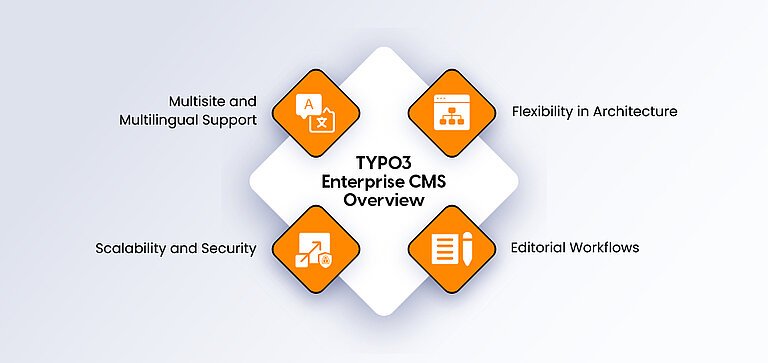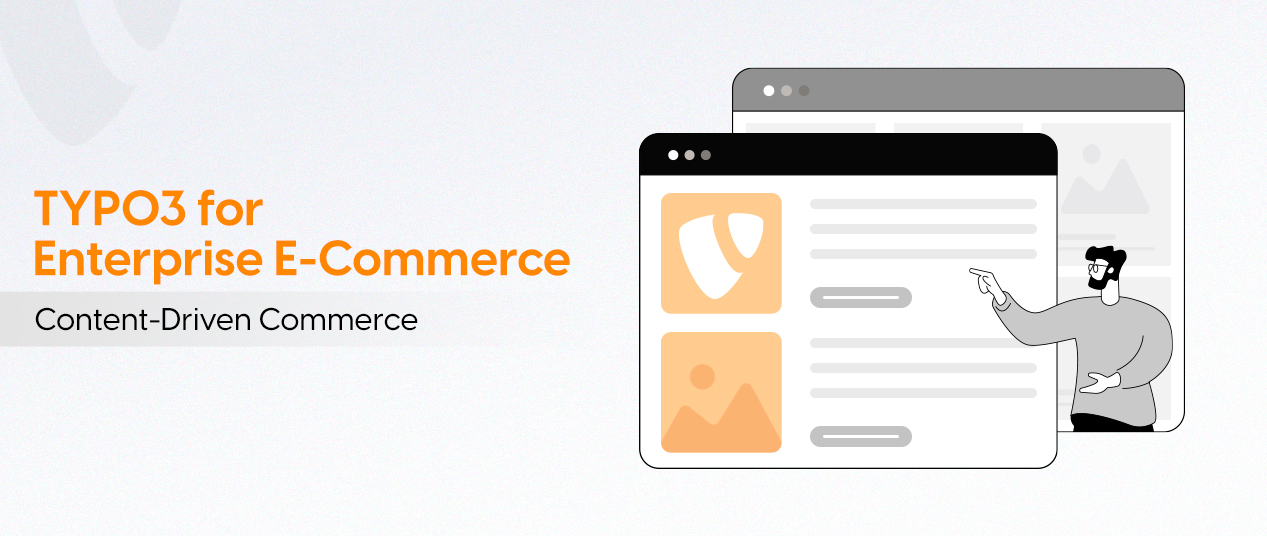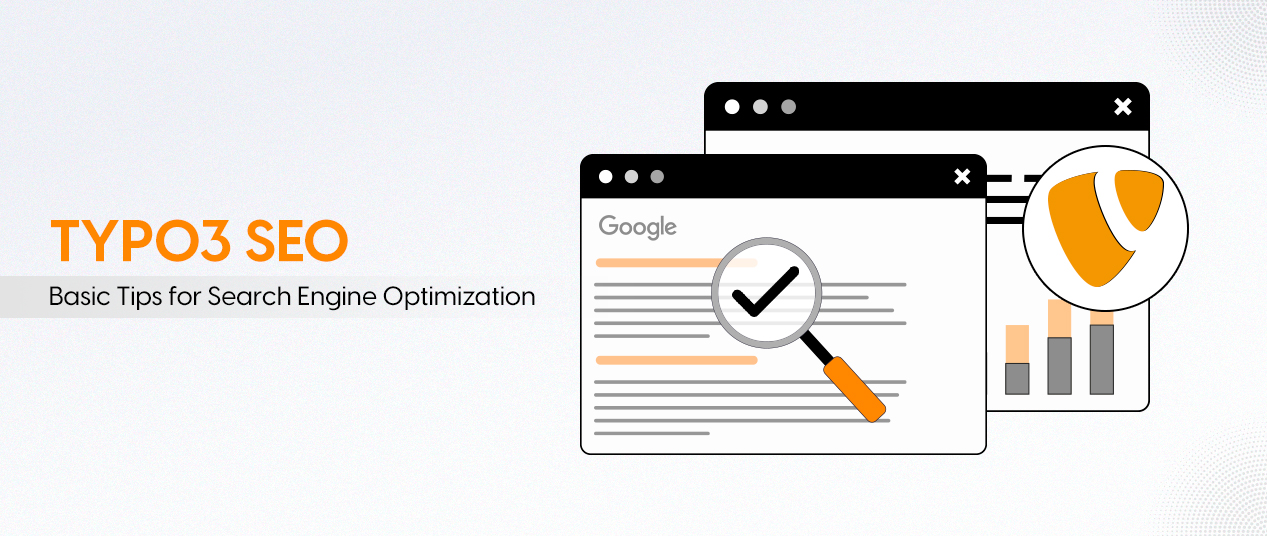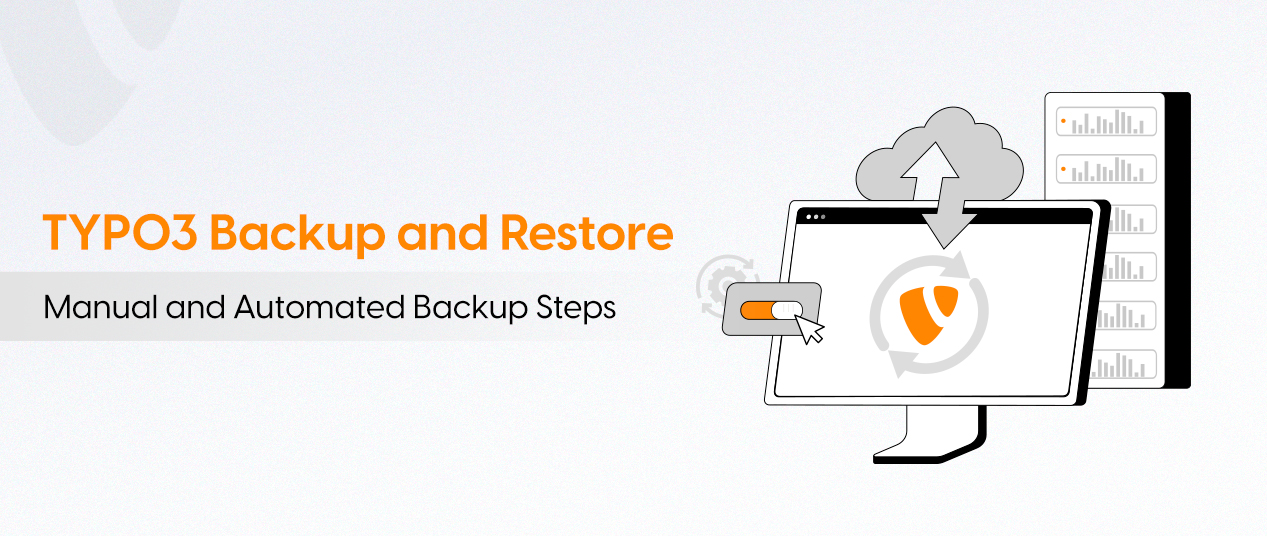E-commerce is a backbone of business in Germany today. TYPO3 is one of the most trusted content management system for enterprises in Germany. TYPO3 has about 14% market share of CMS in Germany, and ranks second locally.
Why should this matter? Because with the right e-commerce solution, TYPO3 provides that ground; it gives organizations an opportunity to deliver rich content, provide a consistent brand experience, and enterprise-level tech all in one system.
Let's take an in-depth look at TYPO3 for Enterprise E-Commerce!
TYPO3 as a Foundation for E-Commerce

Unlike lightweight CMS solutions, TYPO3 was built with SMBs and large organizations in mind. It can support multiple websites, brands, and languages within a single installation, position it well for companies that function across regions.
TYPO3 for enterprises:
- Multisite and multilingual support: TYPO3 offers a solution for managing separate websites and content for multiple languages within the same system. For a globally operating company, this eliminates the headaches associated with managing multiple, different systems.
- Editorial workflows: Companies can have teams of editors as well as teams from editorial, marketing, and technical staff. TYPO3 has integrated workflows, access controls for different areas of the website, and user roles. These features allow larger teams to work on content simultaneously without compromising quality or security.
- Scalability and security: TYPO3 has earned a solid reputation as a stable system for enterprise projects. Regular security updates and long-term support versions are part of the TYPO3 culture, which is of great importance to any IT department in companies.
- Flexibility in architecture: The TYPO3 Enterprise CMS is extendable and customizable, and can map complex business requirements. Since TYPO3 was developed on an open-source basis and has a modular design, developers can connect almost any third-party system.
TYPO3 E-Commerce is not a shop system in itself. This is where extensions and integrations come into play. The most advanced option is Aimeos, which functions as a TYPO3 Extension and offers all the e-commerce functions one would expect from an e-commerce framework.
What Enterprises Expect from TYPO3 E-Commerce Platforms

When companies choose TYPO3 for e-commerce, they expect more than just a simple shop. Customer expectations can generally be divided into four categories:
1. B2B Requirements
Features such as individual product prices, corporate accounts, bulk orders, and company-specific catalogs are crucial requirements. The TYPO3 Enterprise CMS with extensions like Aimeos can provide these features.
2. B2C Requirements
For a B2C shop, speed, the quality of personalization, and the checkout process are paramount. TYPO3's strengths in content can be leveraged to offer brands a rich experience alongside the shop.
3. Technical Requirements
Companies expect easy integration into their existing environments such as ERP, PIM, and DAM systems and often desire TYPO3 as a headless or API-first solution. The modularity of TYPO3 provides an answer for this.
4. Compliance and Security
Companies expect strong security mechanisms, access controls, and regular updates to comply with strict data protection laws (such as in the EU, e.g., GDPR compliance). TYPO3 can meet these requirements and has a long history of a solid compliance record.
In conclusion, companies are looking for TYPO3 e-commerce solutions that offer them a high level of security, can connect with existing systems, support complex business models, and perform in a reliably scalable environment.
TYPO3 in the German E-Commerce Market
Germany is one of Europe’s strongest e-commerce markets. In 2024, German online retail sales reached around €80.6 billion, the first increase since 2021. Total commerce (marketplaces + online stores + traditional channels) for B2B alone recently surpassed €1.7 trillion, with roughly €427 billion from online shops and marketplaces. This shows how central e-commerce has become for enterprises.
In this context, TYPO3 Enterprise CMS has a distinct role. It is a content-first content management system (CMS) with an ability to extend towards e-commerce. Its best capability is to produce multilingual e-commerce and multisite experiences for sophisticated content-driven experiences.
TYPO3 is best applied when organizations need technology that enables secure content management along with flexible e-commerce. Organizations can run multiple brands or countries from a single TYPO3 instance and connect to an e-commerce engine like Aimeos or commercetools, while also preserving full editorial control of content and campaigns.
TYPO3’s role in the German marketplace is as a powerful CMS expanded into commerce, specifically for organizations with a focus on complex content and global operations, with e-commerce.
TYPO3 vs. Other Enterprise Solutions
Businesses in Germany and the DACH region have a multitude of e-commerce platforms available.
| Feature / Platform | TYPO3 + Aimeos | Spryker | Shopware | commercetools | Adobe Commerce |
CMS / Content Management | Excellent | Limited | Moderate | Limited | Moderate |
Multisite / Multilingualism | Excellent | Moderate | Good | Moderate | Good |
B2B Features | Moderate (with extensions) | Excellent | Good | Good | Excellent |
B2C Features | Moderate | Good | Excellent | Good | Excellent |
Headless / API-first Support | Good | Excellent | Limited | Excellent | Moderate |
Marketplace / Multi-vendor | Limited (via Aimeos) | Excellent | Good | Moderate | Good |
ERP / PIM / DAM Integration | Good | Good | Good | Excellent | Good |
Ease of Setup / Deployment | Moderate | Moderate | Good | Moderate | Moderate |
Best Use Case | Content-driven commerce, multisite/multilingualism | B2B, marketplaces, composable commerce | Flexible B2C & B2B shops | Headless / API-First enterprise commerce | Enterprise B2C/B2B with strong ecosystem |
Key Takeaways:
- For content-heavy, multilingual and multi-brand enterprise projects, TYPO3 + Aimeos is the best available option.
- For use cases centered around B2B, marketplaces and headless composable commerce Spryker is a good fit.
- For B2C/B2B shops that need to be quickly deployed while remaining flexible, Shopware is flexible.
- For headless, API-first commerce projects, Commercetools is ideal for organizations with ambitious integration plans.
- For enterprise-level B2C/B2B projects looking for a mature ecosystem and marketplace integrations, Adobe Commerce fits the bill.
Integration with TYPO3

TYPO3 is essentially a Content Management System and not a complete E-Commerce engine. To realize E-Commerce at an enterprise level, TYPO3 is usually combined with a specialized solution. Here are some of the most common ways companies implement this:
1. TYPO3 + Aimeos
Aimeos is the most popular E-Commerce extension for TYPO3. It offers full shop functionality, including product catalogs, shopping carts, checkout, subscriptions, and vendor management. Aimeos is highly scalable, supports large catalogs and high traffic, and is therefore suitable for enterprise-level projects.
2. TYPO3 as a CMS front-end + Headless Commerce backend
Companies often use TYPO3 to manage their content while connecting a headless commerce engine like commercetools or Spryker. In this combination, TYPO3 provides product pages, blog content, and landing pages, while the commerce engine handles pricing, checkout, and inventory management. This is particularly useful for companies that need flexibility, an API-first architecture, or a focus on omnichannel experiences.
3. TYPO3 with ERP, PIM or DAM
Enterprise E-Commerce typically involves multiple systems. TYPO3 can be integrated with the ERP system for orders and inventory, with PIM platforms for structured product data, and with DAM systems for media management. These integrations ensure that content and commerce experiences remain consistent across channels and as automated as possible.
In short: TYPO3 acts as a flexible content layer, while integrations and extensions provide the full E-Commerce functions that companies need.
Is TYPO3 the Right Fit?
Selecting TYPO3 for enterprise e-commerce is based on your business needs. TYPO3 is not for all businesses, but knowing when it might be the best option is important.
When TYPO3 might be a good fit:
- For enterprises whose priorities include content-driven commerce and storytelling with the brand, alongside a transactional feature set.
- For companies with multiple sites, brands, or languages to manage in a single platform.
- Business planning to use composable or headless commerce approaches, where TYPO3 serves as the "content layer" connecting with other technologies.
- When organizations need full editorial workflows and collaboration among their teams for content and campaign development and implementations.
When the other technology solutions could be a better fit:
- Companies focused purely on commerce with little need for content.
- Enterprises that need B2B modules, marketplaces, and/or checkout flows ready to use without future development.
- Companies that want to deliver faster without marketing technology integrations using solutions like Shopware, Spryker, or Adobe Commerce.
Conclusion
TYPO3 is not a shop system by default, but that makes it powerful for enterprises that want content and e-commerce in one platform. Its strengths lie in multisite control, multilingual setups, secure, and flexible integrations with tools like Aimeos or commercetools.
Enterprises should compare TYPO3 with e-commerce platforms. If content management and scalability are top priorities, TYPO3 is often the better choice.
Partnering with a skilled TYPO3 Agency helps enterprises design the right setup, connect systems, and ensure long-term performance. In short, TYPO3 is a strong option for businesses aiming to build content-driven, enterprise-grade e-commerce.
FAQs
Yes, with frameworks such as Aimeos, TYPO3 can fuel complete e-commerce stores, but it remains CMS first.
Yes, with TYPO3 merge with the appropriate frameworks can provide B2B features such as custom pricing, bulk ordering, and ERP integration.
Yes, TYPO3 may function as a headless CMS by connecting to API first platforms such as commercetools or Spryker.
Aimeos is the most exhaustive solution while there are connectors for OXID, Shopware, and SAP Commerce.
Yes, TYPO3 is a good fit for global as well as multi-brand e-commerce projects due to its multilingual and multisite capabilities.
Contact for Internet agency and TYPO3 projects
Sven Thelemann
Service Partner - Germany






Be the First to Comment